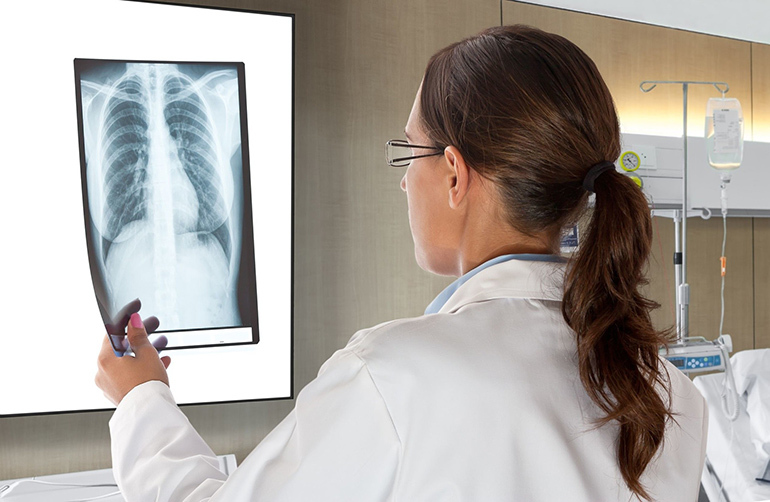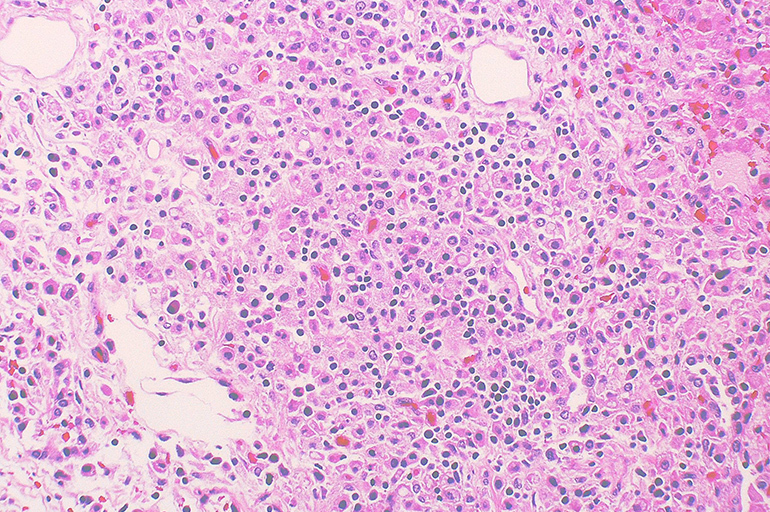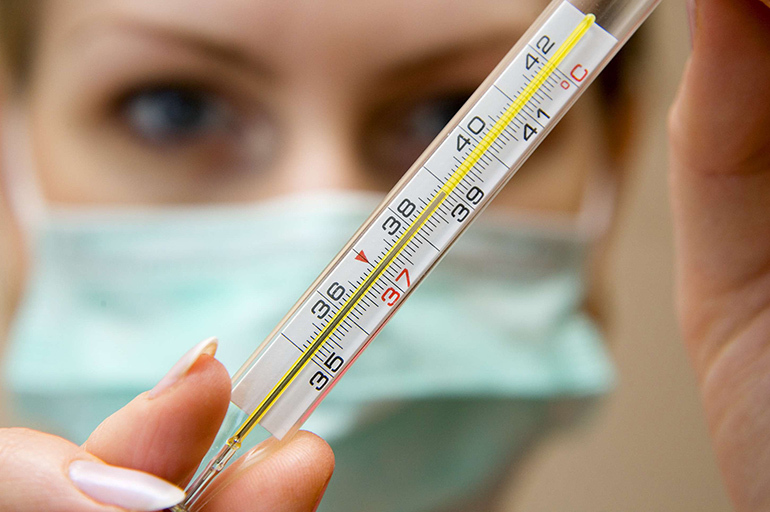Content
- General characteristics of the disease
- Reasons for the appearance
- Symptoms and Signs
- Main types
- Classical
- Latent
- Areactive
- Forms of the disease
- Sharp
- Meningeal
- Typhoid
- Pulmonary
- The clinical picture of the development of miliary pulmonary tuberculosis
- Infectious or not: ways of infection
- Diagnostic methods
- X-ray
- Differential differences
- Basic principles of treatment
- Surgical intervention
- Recovery prognosis
- Rehabilitation and restoration of the body
- Complications and possible consequences
- Prevention methods
Miliary tuberculosis is a severe infectious disease characterized by long-term persistence of symptoms even with targeted treatment and frequent relapses. With this form of pathology, characteristic small foci can be located not only in the lungs, but also in other organs.

General characteristics of the disease
The miliary form of tuberculosis got its name from the Latin word milium, which translates as "millet". With this course of the disease, many small tubercles appear on the lungs, the diameter of which is only 1-2 mm. These formations outwardly resemble millet.
The tuberculosis pathogen quickly destroys blood vessels, which contributes to its spread throughout the body. The kidneys, lymph nodes, spleen and serous membranes are most often affected. Less commonly, tubercles with active mycobacteria are found in the brain, liver and bones.
Miliary tuberculosis is characterized by an acute course with an increase in symptoms of intoxication and a worsening of the general condition.
Reasons for the appearance
The main cause of the development of the disease is infection with Koch's bacillus. The factors causing the appearance of this pathology include:
- reduced immunity;
- predisposition to allergic reactions;
- poor nutrition;
- bad habits;
- non-observance of the rules of personal hygiene;
- lack of ultraviolet radiation, etc.

Chronic diseases in humans can provoke the development of miliary tuberculosis.
Symptoms and Signs
Clinical manifestations of the disease occur 3-5 days after infection, reaching a peak on 7-10 days. This pathological condition is accompanied by nonspecific signs, including:
- a sharp decrease in weight;
- general weakness;
- an increase in body temperature;
- increased sweating;
- shortness of breath;
- dry cough;
- a rash on the abdomen and chest;
- tachycardia;
- toxic thrombosis.

Acute symptoms can persist for a long time. The process is generalized, so there is a high likelihood of complications, incl. necrotic changes in the tissues of the affected organs, pulmonary hemorrhage, meningitis, etc.
Main types
Depending on the characteristics of the course, 3 forms of miliary tuberculosis are distinguished. They differ in the degree of danger.
Important information: The clinical picture of the development of cavernous pulmonary tuberculosis in adults
Classical
The classic type of course of the miliary type of tuberculosis is characterized by a gradual increase in signs of general intoxication. The patient is slowly losing weight. Fever persists. When carrying out an X-ray examination of the lungs, tuberculomas are detected. Often, when examining the fundus, neoplasms are detected, the diameter of which does not exceed 3 mm.
Latent
The latent type of the course of the disease is often observed in the elderly. It is characterized by persistent fever and a gradual increase in anemia. The foci of infection in the lungs are not determined by x-ray. The tuberculin test may be negative.

Areactive
The areactive form of miliary tuberculosis is considered the most dangerous, because accompanied by generalized sepsis. It leads to multiple organ failure and death of the patient. This type of pathology is extremely rare. His cases are detected mainly in Asia and Africa.
Forms of the disease
Depending on the clinical manifestations, 4 forms of the disease are distinguished.
Sharp
This form of pathology is characterized by the formation of a large number of foci of necrosis in the affected organs, as well as chronically persisting fever. The patient's condition is rapidly deteriorating. Acute miliary tuberculosis is difficult to distinguish from sepsis of other origins. Pathology is extremely difficult to treat.

Meningeal
This form of the disease is characterized by an increase in the clinical manifestations of meningitis, i.e. inflammation of the lining of the brain. Pathology develops due to the spread of Mycobacterium tuberculosis through the bloodstream from the lungs.
The patient has increased symptoms of CNS damage. Often there are complaints of intense pain syndrome, fear of light and nausea.
Typhoid
The clinical picture is similar to that of typhoid fever. In the tissues of all organs, characteristic tubercles are formed. Signs of severe intoxication are rapidly increasing. The body temperature is increased. When coughing, sputum does not come out. The disease is often fatal.

Pulmonary
The pulmonary form of miliary tuberculosis is the most common. In this case, the symptoms of lung damage increase, incl. rapid breathing, shortness of breath, unproductive cough. Most have cyanosis, i.e. blue discoloration of the skin. In addition, signs of general intoxication are strongly expressed.
The clinical picture of the development of miliary pulmonary tuberculosis
Miliary pulmonary tuberculosis occurs in an acute, chronic and acute form. They differ in the severity of the clinical picture. In the chronic form, patients have mild symptoms of general intoxication. However, there are complaints about:
- weakness;
- decrease in performance;
- periodic increase in temperature;
- rapid fatigue;
- loss of appetite, etc.
Important information: The clinical picture of the development of tuberculous pleurisy in humans

In the acute form of the course of the disease, the symptoms depend on the location of the inflammatory process. Often, severe intoxication occurs and pulmonary insufficiency increases. The body temperature is kept at a high level. The general condition is rapidly deteriorating.
Another name for the most acute form is tuberculous sepsis. Clinical manifestations are increasing rapidly. Within a few days, the patient shows signs of pulmonary insufficiency. In the future, other organs are also affected. The body temperature is kept above 40 ° C. There is an erased cerebral symptomatology.
Patients rarely live more than 3 weeks after the first signs of pathology appear.
Infectious or not: ways of infection
Tuberculosis is a contagious disease. The source of mycobacteria are people suffering from an open pulmonary form of pathology.
There are the following ways of spreading the infection:
- Airborne. When you cough and sneeze, mycobacteria are released into the air. They can fly off with sputum and saliva at a distance of 2 m. Then they settle on the surrounding objects. Dried dust can also become a source of contamination.
- Intrauterine. The possibility of transfer of mycobacteria from matter to child is noted if miliary tubercles are formed on the placenta during pregnancy. In addition, there is a possibility of infection during labor.
- Contact and household. There is a chance of contracting tuberculosis if you share dishes and personal belongings.
- Alimentary. Infection through food and water is rare, but this possibility cannot be ruled out.

Diagnostic methods
If signs of illness appear, the patient should seek advice from a pulmonologist and phthisiatrician. After collecting anamnesis and auscultation, the specialist prescribes the following studies:
- radiography;
- blood, sputum and urine tests;
- tuberculin test;
- CT;
- puncture;
- study of the eye day.
X-ray
In the early stages of the pathological process, radiography does not allow detecting the presence of miliary tuberculosis. At the same time, in some patients, an increase in the pulmonary pattern is revealed. Re-examination is performed after 2 weeks. When performing radiography, multiple shadows are visible in the images, the diameter of which reaches 1.5-2 cm. This is enough for a diagnosis.

Differential differences
Miliary tuberculosis must be differentiated from pneumonia, metastatic cancer, sarcoidosis, and hemosiderosis. There are a number of signs that allow these diseases to spread. With tuberculosis, a large number of small tubercles are found in the images. For differential diagnosis, the results of laboratory blood and sputum tests are important.
Important information: The clinical picture of the development of focal pulmonary tuberculosis
Basic principles of treatment
This pathological condition is treated in a phthisiatric hospital. In case of an acute course, the patient can be hospitalized in the intensive care unit. To suppress the activity of mycobacteria, the following medications are prescribed:
- Rifampicin.
- Isoniazid.
- Ethambutol.
- Para-aminobenzoic acid.

In addition, symptomatic therapy is carried out. Specialists prescribe antipyretic, anti-inflammatory, pain relievers. Detoxification therapy may be required.
Surgical intervention
The indications for surgical intervention are the following conditions:
- scarring of tissues;
- the formation of cavernous areas with pronounced perforation;
- lack of positive dynamics with conservative treatment;
- frequent relapses of the disease;
- sepsis;
- frequent complications.
Often, part or lobe of the lung is removed. The operation can be performed both open and endoscopic.
Recovery prognosis
With the timely detection of the disease and the patient undergoing complex treatment, the probability of a favorable outcome reaches 80%. At the same time, such high rates are observed only if, after the initial recovery, the patient undergoes rehabilitation and changes his lifestyle. With a complicated course of pathology, as well as with the patient's unwillingness to give up bad habits, the prognosis is unfavorable.
Rehabilitation and restoration of the body
After the suppression of the activity of pathogenic microflora, the patient is recommended to sanitary-resort treatment. To restore lung volume, it is recommended to do breathing exercises. As the general condition improves, the patients are prescribed exercise therapy. During the recovery period, people need a high-calorie diet.
Complications and possible consequences
Frequent complications of miliary tuberculosis include:
- meningitis;
- cervical lymphadenitis;
- polyserositis;
- hypokalemia;
- blood clotting disorders;
- multiple organ failure;
- toxic shock.
Possible consequences of the disease include pulmonary insufficiency. It negatively affects the prognosis of survival and quality of life.
Prevention methods
To reduce the risk of developing tuberculosis, you should get rid of bad habits and avoid communication with people suffering from an open form of the disease. You need to regularly wet the house and wash your hands before every meal. It is advisable to undergo preventive examinations and do Mantoux.
